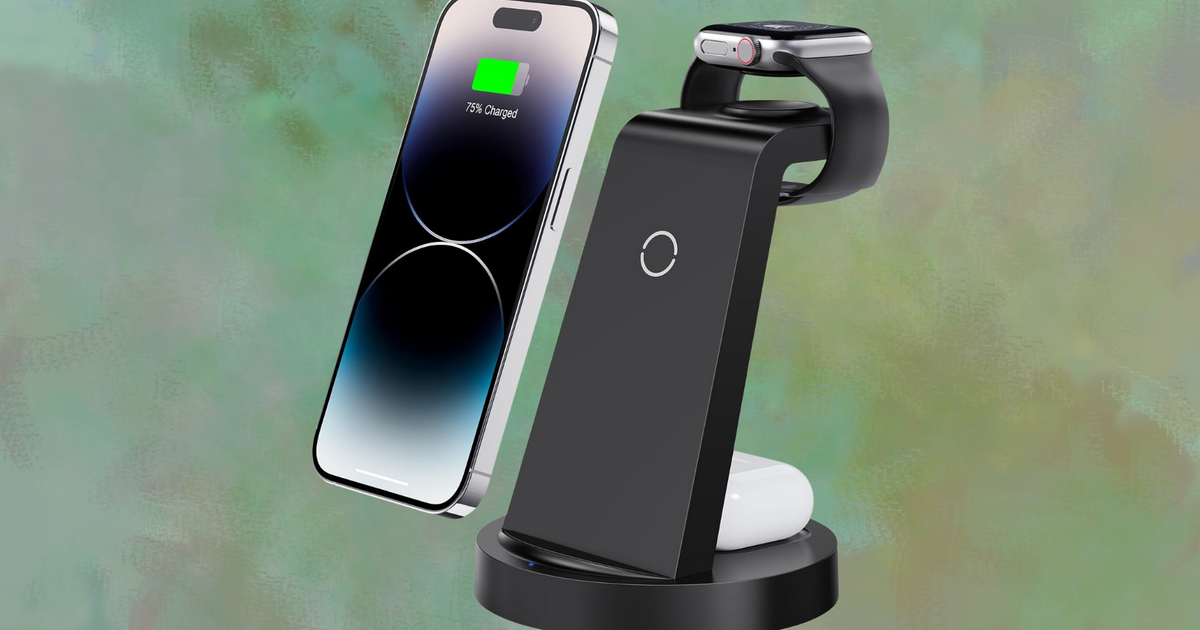These machines spin mock meat out of mycelium, turn human tissue into an artificial heart, and may soon spit out dwellings fit for the Moon.
At first, 3D printing essentially saved time and effort. It could soon save lives, help humans colonise space, redefine the future of how we eat, build, heal.
Where the traditional sculpting of parts is largely a subtractive process, 3D printing is additive, working from the ground up. It can build intricate shapes precisely, without wasting material; and it can make complex shapes more easily, more flexibly and in ways that are far more easily customisable. That’s where it all began.
A typical plastics 3D printer is made up of a print bed, where the object is formed; an extruder which controls the amount of material fed to the printer; and a nozzle, which contains a heating chamber where the material is melted and then pushed out.
The object to be printed is built using computer-aided design software, which instructs the printer on how to deposit the melted material layer by layer, to form the desired shape.
Different parts of this basic mechanism are further modified to work with different materials – from cement to metal to food – on different scales and sizes.
In just a few recent experiments, such machines have built a post office in Bengaluru, a vegan cheesecake at Columbia University (it was baked by the machine as well), and assembly-free engines for rocket ships.
Limits are being pushed every year. The tallest 3D-printed structure in the world is currently a villa 9.9 metres high, built in Saudi Arabia last year. By the end of this year, it will have been superseded by a structure three times as tall, currently being constructed as a cultural centre in the Swiss Alps. Meanwhile, the first 3D-printed mock meat to be made commercially available — a faux salmon filet made out of mycoprotein — hit supermarket shelves in Europe last year.
All this, in about four decades. The first 3D printers were invented in the 1980s. Early iterations include an attempt by Japanese inventor Hideo Kodama, in 1981, to build a rapid prototyping device that used photosensitive resin, applied layer by layer and cured using UV light. Even though he failed to patent it, it is widely considered the first demonstration of additive manufacturing technology.
The first patent for a 3D printer was awarded in 1988, to American furniture-builder Charles Hull, who wanted to create small custom parts, quickly, easily and at low cost. Like Kodama, he created 3D models by curing photosensitive resin layer by layer.
Researchers around the world are now working on refining the process. Companies such as the American Impossible Objects are working to speed things up. Others are working with superalloys to do more with metal. Still others are innovating to get these machines to produce something akin to fabric (weaving is hard for a nozzle to do, but read on for more on the progress made on all these fronts).
What is the likely impact of all this, in a country such as India? 3D-printing fits into a larger ecosystem of digital manufacturing technologies that use machine learning, artificial intelligence and robotics, all of which are helping replace human labour, says Sujoy Chakravarty, a behavioural economist at Delhi’s Jawaharlal Nehru University.
“What happened in the Global North in the ’80s and ’90s – when widescale automation of the supply chain created jobless growth – could happen here in the next decade,” he adds. “It has traditionally been cheap to employ workers in exploitative agreements. But what with higher wages and labour safeguards, machines can now be cheaper. Thus, it is becoming convenient for manufacturers to replace even skilled labour with machines and algorithms. Further, though machines may be expensive to maintain, they don’t complain, talk back, organise or criticise.” This outlook is one concern.
When a post office was 3D-printed in Bengaluru over 43 days last year, for instance, a small group of construction labourers was required on-site to inspect the cement-curing process and help with reinforcement detailing. Eventually, as the technology evolves, even further minimisation of labour requirements will occur, says Manu Santhanam, dean for industrial consultancy and sponsored research at the Indian Institute of Technology-Madras (IIT-M), who worked on that project. “Labour will have to be upskilled and people will have to be trained to use the machines and have a technological understanding of how they work.”
Meanwhile, in terms of its ecological implications, the jury is still out on 3D-printing. It can reduce energy use and material waste, and enable the recycling and repurposing of materials, but it takes energy to heat, print, and to cool the machine.
“At first cut, it appears to be more environmentally friendly than traditional manufacturing processes,” says Mridula Ramesh, founder of the Sundaram Climate Institute and author of The Climate Solution: India’s Climate Change Crisis and What We Can Do About It. “But, as with every such question, there are nuances and trade-offs that will only emerge as we attempt to reach scale with this technology. What we should watch for is the recyclability of the materials used, and how this technology will affect employment in the supply chains it touches.”
Meanwhile, new leaps continue to be made. Read on for more on the latest in 3D-printed food, fashion, housing, medicine and space infrastructure.
.
Homes, towers, post offices
Buildings in twisty shapes, that soar several metres above the ground, are held together by screws and cables, and can be dismantled, moved and reassembled: the future of cutting-edge construction could be 3D-printed.
Showing the way is a 30-metre structure called The White Tower, designed by architects Michael Hansmeyer and Benjamin Dillenburger, being built in the Swiss Alps, in a 3D-printing process developed by the Swiss Federal Institute of Technology Zurich.
It will be the world’s tallest such structure, by far. (The tallest 3D-printed building in the world currently is a three-storey, 9.9-metre-tall villa erected in Saudi Arabia last year, using a 3D printer made by the pioneering Danish company COBOD.)
When it is completed later this year, it will open as a cultural centre. Five years down the line, in 2029, it will be dismantled and moved to a new location.
It will be made of 32 hollow Y-shaped columns of soft concrete. The design will be a demonstration of the economical use of concrete, its designers says, and it will mark the first time that metal reinforcements are integrated into the printing process.
Not all 3D-printed construction need be this ambitious. Sometimes, it’s simply about less waste and more speed.

In August, a post office was 3D-printed in Bengaluru, for instance, using a COBOD printer that was essentially a robotic arm with a nozzle through which a mixture of fine cement aggregate, chemical and mineral additives, sand and water were pushed out, like icing from a piping bag, layer upon layer.
The design left openings for doors and windows, and cavities for metal reinforcements, wiring and plumbing, which were added later by human workers.
The 1,021-sq-ft structure has an unusual pear shape. It is devoid of load-bearing beams. And it was built in 43 days, as opposed to the three or four months it would have otherwise taken, by Larsen & Toubro, with technological support from the Indian Institute of Technology (IIT)-Madras.
This wasn’t IIT-M’s first 3D-printed construction either. In 2020, along with Tvasta, a start-up incubated at the institute, IIT-M printed a 600-sq-ft one-bedroom house on campus, in five days, using a mixture of locally available materials, including cement, sand, geopolymers, and fibres.
“These buildings are proof-of-concept structures for a technology that could eventually be used to make low-cost cluster housing in semi-urban areas of India,” says Manu Santhanam, dean of industrial consultancy and sponsored research (ICSR) at IIT-M. “You can mobilise a printer, which would be the bulk of your overheads, and build tens of houses in places where there is sufficient land available to economise on construction costs.”
.
Hearts and eyes

Bio-printing is changing operation theatres, and showing the potential to restore sight and save lives.
The world’s first 3D-printed heart, for instance, was created in Israel in 2019. In 2022, India made its first 3D-printed cornea. The heart was made from fatty tissue that was reprogrammed to make stem cells.
Though it was too small to be implanted, “larger human hearts require the same technology,” Tal Dvir, of Tel Aviv University’s School of Molecular Cell Biology and Biotechnology, said in a statement. (Their findings were published in the journal Advanced Science.)
The cornea was made by researchers at IIT-Hyderabad, the LV Prasad Eye Institute (LVPEI) and the Indian Institute of Chemical Technology’s Centre for Cellular and Molecular Biology (CCMB), using stem cells sourced from a human eye.
“We used a distinct bio-mimetic hydrogel as the foundational material,” says Vivek Singh, senior research scientist at LVPEI. “Using a hydrogel derived from human corneal tissue replicates the cornea and also ensures biocompatibility, so that it is not rejected by the human body.” The cornea was successfully transplanted into a rabbit’s eye.

Meanwhile, over the past decade, 3D printers have been helping doctors around the world create customised prosthetic limbs and implants, and reduce surgery time from hours to minutes. From bone screws to injectors, new devices are also being 3D-printed and tested in real time, to create task- , even patient-specific instruments.
In India, the technology is being used to replace expensive imports. In December, researchers at the Indian Institute of Technology (IIT)-Madras, along with ZorioX Innovation Labs, made 50 face implants for low-income patients suffering from necrosis and disfigurement as a result of mucormycosis or the “black fungus” infection.
Custom-made medical-grade titanium implants were made using MRI and CT scan data as blueprints.
“3D printing harbours vast potential to transform medicine and healthcare by delivering personalised solutions and enhancing the accessibility and affordability of healthcare on a global scale,” says Singh of LVPEI. “We expect to see dramatic change over the next 10 years.”
.
Rocket engines, space tools

Imagine trying to fly a construction crew, with their tools and materials, to the Moon, or to Mars. This tedious idea can be put to rest, as humans will most likely have 3D printers building structures off-planet, possibly by 2040.
The US’s National Aeronautics and Space Administration (NASA) has partnered with Texas-based construction technology company ICON to develop a space-based construction system that can build human habitats on the Moon, using as much locally available material as possible.
The 3D space-construction printer being developed by ICON will be a device that can withstand high levels of radiation and bombardment by micro-meteorites, handle temperatures above and below the boiling point of water, operate in low gravity, and be controlled from Earth. It will also have to manipulate the Moon’s sharp, inert soil into a durable concrete-like mixture that can withstand the same conditions.
3D-printing technology has quietly been seeping into various aspects of space exploration. The International Space Station (ISS) has had plastic 3D printers since 2014. They have been used to repair and replace plastic parts without needing to wait for assistance or supplies from Earth.
This January, the European Space Agency sent the first metal 3D printer, a device developed by Airbus, to ISS. It “will produce load-bearing structural parts that are more resilient than a plastic equivalent,” Airbus lead engineer Gwenaëlle Aridon says in a statement.

The technology is helping with space-travel hardware. In March 2023, the American aerospace manufacturing company Relativity Space test launched Terran 1. It reached space but failed to go into orbit and fell back to Earth . Nonetheless, it was the first spacecraft to have all its engines (nine of them) 3D-printed.
Rockets have been using smaller 3D-printed metal parts for over a decade. The first 3D-printed rocket engines were used in 2014, in SpaceX’s Dragon spacecraft, which has been ferrying astronauts and cargo to and from ISS.
In another advance, in 2022, the Indian space-tech start-up Agnikul Cosmos received a patent for the world’s first single-piece 3D-printed engine.
The Agnilet requires no assembly and is made from the high-performing nickel superalloy Inconel (superalloys, which allow for greater flexibility and durability and withstand far higher temperatures, including some made by NASA, are playing a pivotal role in metal-based 3D-printing). The Agnilet will power an Agnibaan rocket that is due to be tested in a suborbital flight later this year.
.
Some early appetisers

In 2023, a new product hit supermarkets in Europe. It looked like salmon and tasted like salmon, but The Filet by the Austrian food start-up Revo Foods was only inspired by the fish. It is made of mycoprotein (derived from fungi), built layer by layer, to form a filament-like matrix with a fish-like texture.
This was the first large-scale rollout of a product made by a 3D food printer. Though the technology has been around for about two decades, high costs and the difficulty of sourcing the right ingredients held it back.
In recent years, though, 3D food printers have evolved to mix ingredients, print lab-grown meats and cook food while printing, using lasers. In March 2023, for instance, engineers at Columbia University whipped up a seven-ingredient vegan cheesecake, using a multi-material nozzle to print it layer by layer, and using lasers to bake it in situ.

At India’s Council of Scientific and Industrial Research, scientists have been 3D-printing noodles from vegetable waste, and are now using the same printer to create vegan faux fish, complete with Omega-3 fatty acids, all with components derived from plant sources.
“3D food printing will still turn out processed foods, but perhaps the silver lining will be, for some people, better control and tailoring of nutrition – personalised nutrition,” Christen Cooper, a co-author of the study published in NPJ Science of Food, said in a statement.
On that front of personalised nutrition, the US Department of Defense’s Food Engineering and Analysis Lab is experimenting with 3D-printed energy bars that can be tailored on-site to meet the nutritional needs of individual soldiers.
The technology holds immense promise for astronauts. The food-tech start-up Beehex has been working with NASA to develop food printers that can create meals from powdered proteins, carbohydrates and macro and micronutrients. Their first prototype, released in 2017, was a pizza that did not taste great, by all accounts, but was a good extraterrestrial alternative nonetheless.
Beehex and NASA are now working on 3D-printing steaks from plastic waste, of all things. Essentially, shredded plastic will be treated with modified bacteria in a bioreactor. The bacteria will eat the plastic and turn it into a biomass, which can then be used as a food ink to 3D-print a steak or a slab of chicken breast. Bon appetit?
.
On the runway, DIY soon?

One of the first 3D-printed garments to appear on the runway was showcased in 2010, by the Dutch designer Iris van Herpen, at the Amsterdam Fashion Week. Made of a white polymer, it was inspired by snail shells and made of 3D-printed panels hand-stitched together.
Brands around the world have been pushing the boundaries of what is possible ever since.
Over the past decade, Adidas, Nike, Dior and Fendi, among others, have used the new materials, new textures and greater design flexibility afforded by 3D-printing, in apparel, footwear, bags and accessories.
A key breakthrough came in 2013, when New York fashion designer Michael Schmidt, in collaboration with architect Francis Bitonti, made the first fully 3D-printed dress from powdered nylon. The dress, modelled by actress Dita Von Teese, comprised 3,000 joints in a flowing mesh design, and emerged from the printer fully formed, with no human intervention required.
Around the same time, the American technology design company Nervous System invented a system called Kinematics that could extrude flowing plastic fabrics to 3D-print a dress with several interlocking components, that flowed and swayed as a conventional dress would. This garment, which took two days to print, has been acquired by the Museum of Modern Art for its permanent collection.

Wearability remains a challenge. 3D printers cannot yet work with real fabric, so these garments are not suitable for regular use. But the science is getting there.
In 2019, researchers at the Massachusetts Institute of Technology (MIT) created a tulle-like quasi-textile called DefeXtiles, by leveraging a 3D-printing defect. The material is made using a common, unmodified 3D plastics printer, by encoding gaps in the printing process that would otherwise occur only when the printer had run low on its polymer ink. The result of this new process is a geometric, woven-like polymer structure that is thin, strong and flexible. The research team has also encoded and produced lace-like patterns using this method.
The future in fashion? It could be 3D-printing-led DIY platforms, where bespoke makes a big comeback, but with no tailor involved.















+ There are no comments
Add yours